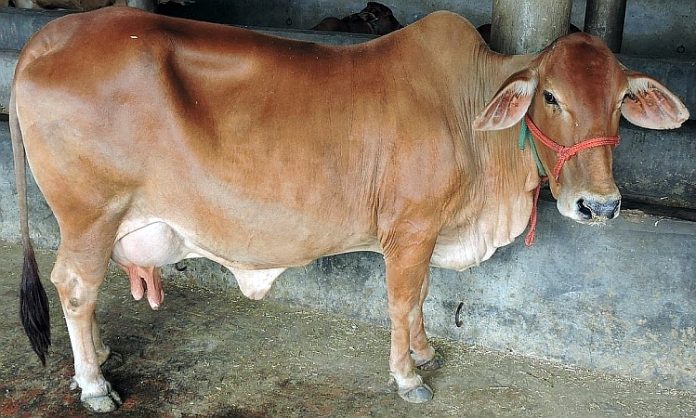Patna: Good news for those interested in cattle farming. The Bihar government has launched the much-awaited scheme to encourage rearing of indigenous varieties of cow, under which the farmers can get subsidy up to 75% of the project.
Officials of the state animal husbandry directorate said that interested farmers can apply for subsidy under the project from August 1 to September 1 for indigenous cow rearing. Subsidy will be given for cow rearing of two, four, 15 and 20 units of indigenous breeds like Sahiwal, Gir, Tharparkar. General and backward class farmers will get 50% subsidy on two and four unit of cows, while extremely backward class (EBCs), scheduled castes (SC) and scheduled tribe (ST) farmers will get 75% subsidy of the cost cow purchase and setting up the required cow sheds.
Also Read: Centre heightens bids to check lumpy virus outbreak in WB districts
All categories of farmers will get subsidy up to 40% only for rearing of 15-20 units of indigenous cows. A provision of ₹37.05 crore has been made for the scheme of indigenous cow rearing.
NDDB to provide indigenous breed of cows
The agriculture directorate had made an arrangement with agency like the National Dairy Development Board (NDDB) to provide adequate number of cows to interested farmers. “The farmers can buy the identified varieties of cows themselves or the directorate would arrange them through the agency. Farmers can do cow rearing by investing their own money or by taking loan from the bank. There will be a target of giving more than 5500 cows to the cattle rearers,” said an official.
Also Read: UNDP partners with Absolute to scale up farming under PMEBY
Indigenous breeds are adapt to local climate
The state government is encouraging farming of indigenous breed of cows, as they are easy to adapt to the climate here. Cows of these breeds get sick lesser as compared to cross-breeds like jersey. Moreover, milk quality of indigenous breeds are better than those of jersey or cross-breeds of foreign origins. Milk of indigenous breeds are sold in the market in the range of ₹80-120 per litre and it contains 5 to 8% fat, whereas the milk of Jersey and cross-breed cow contains only 3 to 4% fat.
Online application to avail the scheme
The farmers will have to make online application to the District Dairy Development Officer of their concerned districts. The beneficiary will be selected by a four-member committee constituted under the chairmanship of the District Lead Bank Officer. District Cow Development Officer will be the member secretary in the committee. District Animal Husbandry Officer, District Level Officer of Industry Department and representative of Zilla Parishad will be the members.
Also Read: Centre asks Jharkhand to follow SoP to curb spread of H5N1 virus
10 kattha land required for rearing of 15 and 20 cows
There is no land requirement for rearing of two cows. However, those planning to buy four cows under the scheme are required to furnish the documents of at least five kattha of land while 10 katha is required for claiming subsidy for rearing of 15 and 20 units of cows.
As per the government’s estimate, cost of two cows come around 2.42 lakh and four cows is around 5.20 lakh. Farmers can get 15 cows at the cost of ₹20.20 lakhs and 20 cows in ₹26.70 lakhs
Bihar ranks 9th in milk production
Bihar ranks ninth in terms of milk production in the country. An estimated 11.50 million tonne milk will be produced in year 2021-23. Milk production which was around 1.99 million tone in the year 1951 has gone up to 4.70 million tonne in 2004-05. Likewise, number of cows has gone up to 1.53 crore in 2017 as compared 1.22 crore to 2012, according to the livestock census report of 2017 (the report was released in 2019). Per capital per day availability milk is around 400 grams in Bihar.







